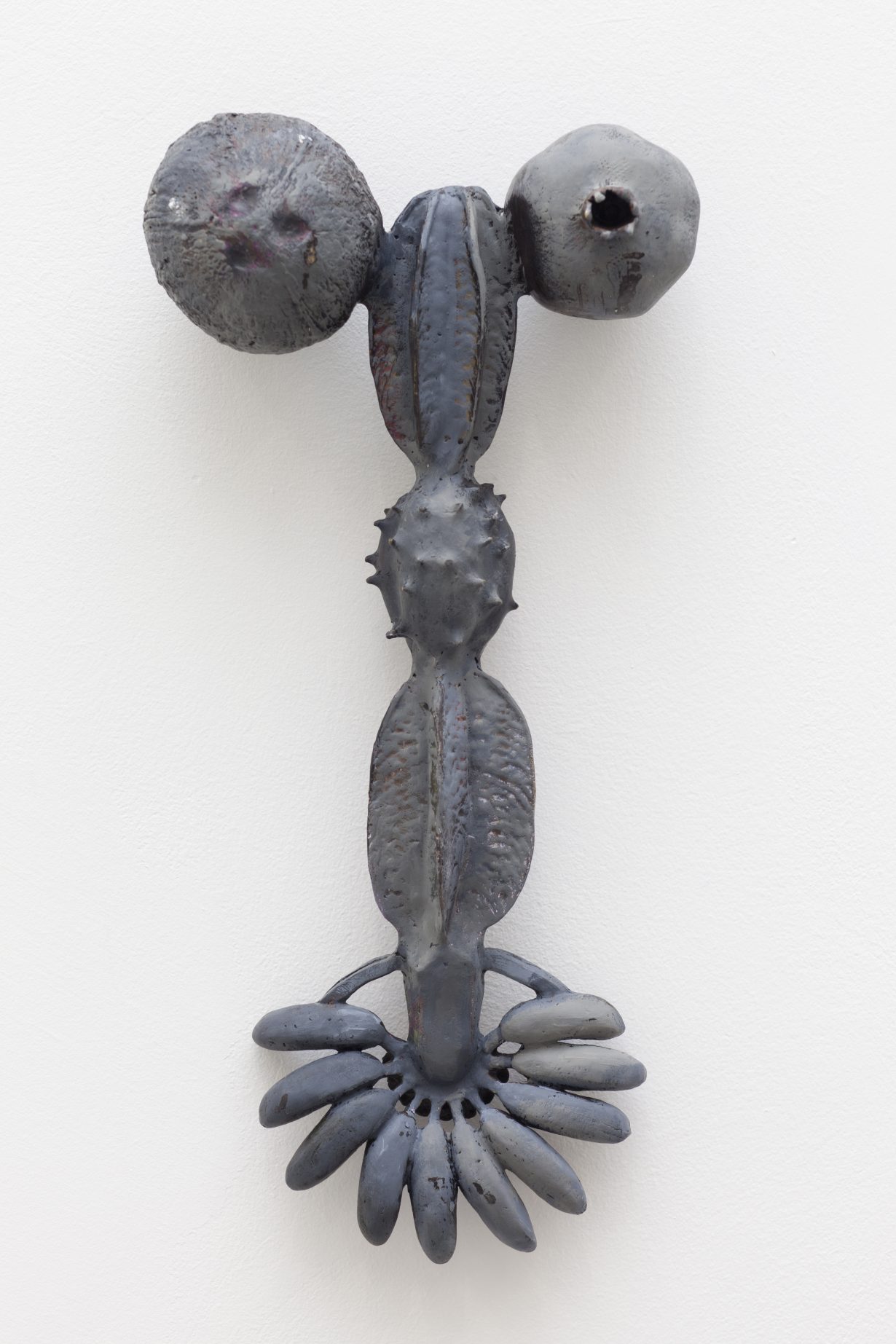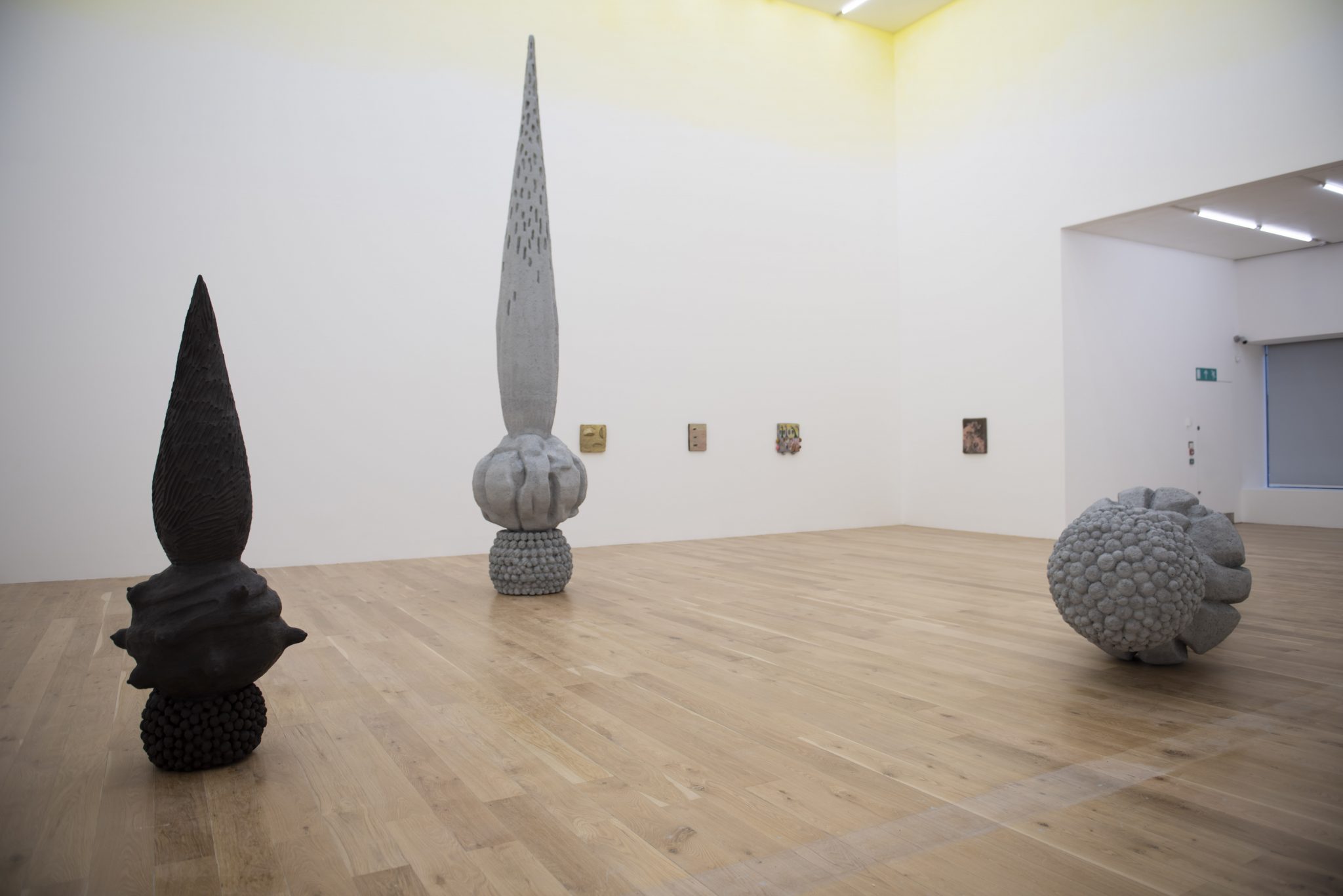Nottingham Contemporary
There’s something decidedly human, tactile and joyful about the work of Brazilian artist Erika Verzutti, on display in this, her first major UK exhibition. The moment you step into the space it gives you a big, warm, sensory embrace. With over 40 works on show, you quickly feel immersed in a magical kingdom made up of curious hybrid seed-pods, flowers, fruits, animals and other more intestinal entities. As soon as one piece draws you in, another calls you over. It’s like being at a busy preview, only without the risk of being trapped in a tedious conversation. It’s a show that invites one to spend time with each piece.
The works vary in scale from the small to the very large. Many of the small works are clearly hand worked in clay and other media, then cast into bronze. The finish is left relatively unpolished and the material never asserts its self-importance as ‘collectable’. In one of these works, Porco (2017), a crude animal form is fashioned with four wooden timbers for legs. Delightfully raw in its making, it is loosely daubed with acrylic paint applied with no regard for neatness. Like much of the work on show, its hand-fashioned quality manifests a sense of playful energy. This confidence in executing naturalistic irregularity is disarming. Her loose, sketchy approach to making is redolent to the playfulness of Picasso. Brancusi’s endless Column is clearly referenced in pieces like Egg Tower with Brazil 2021 and Lápis (Pencil) 2014. But both occupy a lighter, less austere material execution. Many works share the raw expressive qualities of Catalan artist Antoni Tàpies and the Art Nouveau ornamentation of Antoni Gaudi. This visual connection to Southern European Art is perhaps no surprise given the complex historic colonization of Latin America and the vast impact cultural appropriation had on the evolution of modern art.

Other works like Brazil (2018) are fashioned out of papier-mâché, concrete and polystyrene, all lowly materials compared to bronze. A bas-relief panel contains a loose grid of scooped out recesses within which are couched an array of irregularly fashioned painted egg forms. It’s almost as if they were made by someone who had heard stories of, but never actually seen, a tray of eggs. The prevalence of fruit, eggs and other curvaceous forms, generates a strong feel of fertile growth. This exudes an optimistic humanity, standing in gentle opposition to the ongoing destruction of the natural world.
In the shows’ second room, Verzutti has added yellow pigment to the upper walls as if to soften down the ego of Nottigham Contemporary’s architecture. This monkeying around with the syntax of the space is a natural extension of her joyous spirit of invention. Dominating the gallery are two six-metre works made for the show. The first is the vertical Venus Carnival (2021), the other is the prone Venus resting (2021).It made me think of the Colston statue pulled down in the Bristol BLM protests. The forms remind me of bizarre oversized plants or a crudely fashioned dagger. They refer to the Venus of Willendorf, a sculpture discovered in Austria at the beginning of the twentieth century,dating back some 25,000 years. This embedded art historical referencing is prevalent across the show. Verzutti’s work is clearly grounded within the sculptural canon but never relies on it for its own justification. Rather it stands as work with an emphatic physicality and autonomy. It’s the kind of show that demands another visit.
Erika Verzutti is at Nottingham Contemporary, 22 May – 31 October
This article is part of Remark, a new platform for art writing in the East Midlands by ArtReview in collaboration with BACKLIT. Read more here and sign up for the Remark newsletter here
